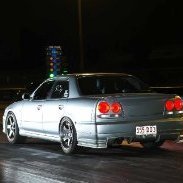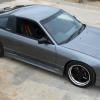How To Get More Power From A Naturally Aspirated (na) Engine
Announcements
-
Similar Content
-
Latest Posts
-
Yep sure does . Comes on primes and cuts off as a factory pump would
-
By Dose Pipe Sutututu · Posted
And I hope the relay receives the trigger signal from the ECU and not the ignition power. It should prime and stop if the motor isn't running. -
I disconnected before the fuel pump and restriction still there. Disconnected at turbosmart fpr and also after ethanol sensor and pressure dropped. No kinks in line but I found one spot above diff that I can hear the fuel flowing while running so I'm wondering if there is built up corrosion from 10 years of sitting. I had injectors cleaned and tested and one was dead but rest were fine. Was never an issue when I owned the car previously but I'll talk to jez about his thoughts on if they should be changed to newer tech. Thx guys at least I know the setup should work again. Pump is wired directly to relay and not using factory plug any more








Recommended Posts
Create an account or sign in to comment
You need to be a member in order to leave a comment
Create an account
Sign up for a new account in our community. It's easy!
Register a new accountSign in
Already have an account? Sign in here.
Sign In Now